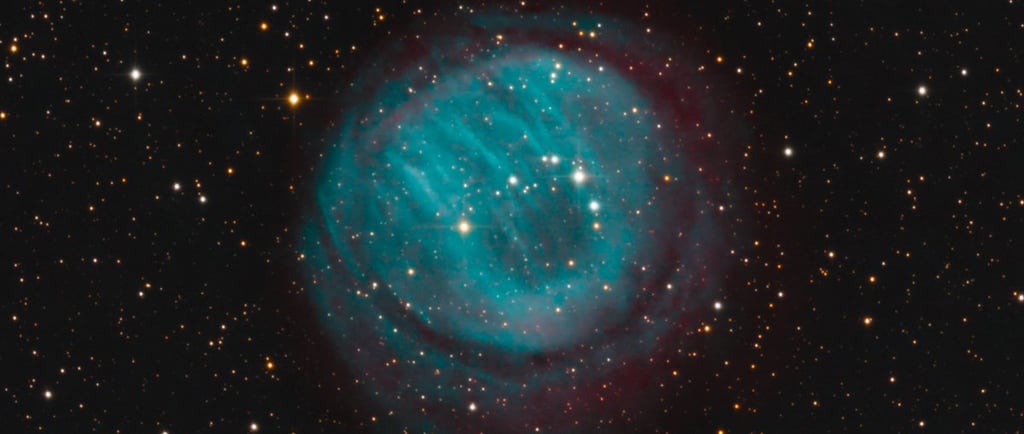The Bearclaw Nebula in Cassiopeia


Introduction to the Bearclaw Nebula
The Bearclaw Nebula, also known as HDW 2, is a fascinating planetary nebula situated within the stunning constellation of Cassiopeia. This celestial wonder is located approximately 3° northeast of the Soul Nebula, another spectacular astronomical body that captivates stargazers and astrophysicists alike. Both nebulae are rich in history and structure, offering insights into the life cycle of stars and the complex interactions of cosmic elements.
A Closer Look at the Bearclaw Nebula
The Bearclaw Nebula is classified as a fait planetary nebula, a term that describes a type of nebula formed from the expelled outer layers of a dying star. As these stars transition into their final stages, they shed their outer envelopes and release energy and materials into the surrounding interstellar medium. This release forms a visually striking nebula, characterized by its intricate shapes and vibrant colors.
Located in Cassiopeia, the Bearclaw Nebula can be observed with telescopes that reveal its beautiful, colorful structure. Stargazers often marvel at the delicate filaments and various hues that define the nebula's appearance, which can include blue, green, and red shades, each resulting from different elements interacting with light.
The Significance of Studying the Bearclaw Nebula
Understanding the Bearclaw Nebula not only enhances our appreciation for the beauty of the universe but also contributes to our knowledge of stellar evolution. The process that creates such nebulae is a critical phase in the life cycle of stars, influencing the formation of new stars and planets in the vicinity. As materials from the nebula are recycled into new celestial bodies, we can begin to grasp the ongoing cycle of life in the cosmos.
Additionally, the Bearclaw Nebula offers a unique landscape for scientists to explore the physical and chemical processes occurring in space. Observations and studies conducted on this nebula and similar formations help scientists develop and refine models of star formation, chemical enrichment, and the dynamics of galactic environments.
In conclusion, the Bearclaw Nebula is much more than a beautiful sight in the night sky. It is a vital component of our universe's narrative, illustrating the incredible processes that govern stellar life and death. As we continue to explore and understand such celestial phenomena, we unlock deeper insights into the very fabric of our cosmos, fostering a sense of wonder that connects us all to the expansive universe.
